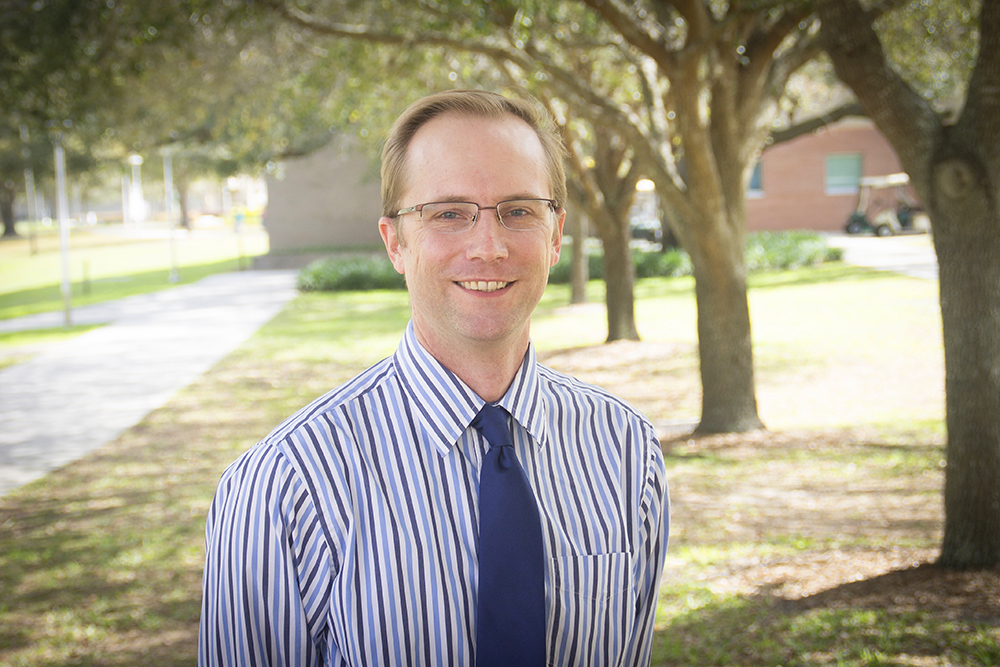College of Engineering News Room
USF Mechanical Engineering Professor to Help Lead “East Meets West in Rehabilitation Sciences” Research Through Fulbright Award

by Russell Nay
Having led the development of a new rehabilitation device for more than eight years, USF mechanical engineering professor Kyle Reed, Ph.D., knows the challenges of taking tech from the lab to the marketplace.
“In the U.S., the supply chain for getting a durable medical good from design to manufacturer to a person’s hand is a very complicated route,” Reed said. “It’s a huge number of people to talk to.”
The process involves a whole host of intermediaries that all need to sign onto a product to successfully commercialize it. Even one issue at one point in the chain — from shipping problems to Food and Drug Administration troubles — can end researchers’ plans to commercialize their new technologies. This process is also different in other countries, which makes commercialization of a potentially international product even harder to navigate.
One of these roadblocks is meeting the needs of potential users of new tech, and Reed received a Fulbright award in June to spend the next 10 months at Hong Kong Polytechnic University helping student researchers connect their rehabilitation science projects to the needs of people with disabilities.
Beginning in August, Reed will work with students, clinicians and researchers in Hong Kong to complete market research and interviews with potentially anyone involved in the process of commercialization, including patients, caregivers, family members, physical therapists and manufacturers.
His work will be partially modelled after the National Science Foundation’s I-Corps program — an 8-week program that prompts researchers to interview 100 people related to their technology and see how well their innovations work for their target markets outside the lab.
“Is the technology going to be something that people need?” Reed said. “How can we ensure that we’re solving the needs of the people and not just doing research for the sake of doing research?”
The rehabilitation science projects at Hong Kong Polytechnic include undergraduate students’ capstone course projects as well as graduate student research. They could encompass a variety of assistive devices, ranging from prosthetics to devices for bioengineering military boots to help reduce related knee and hip injuries in members of the armed forces.
Reed’s work with Hong Kong Polytechnic and its students will take place in stages throughout the course of the Fulbright. The four main stages of the program are ordered by the skills students need to identify how potential users can use their devices, examine approaches already available to these users and tailor device designs to their research findings.
To acclimate students to the interdisciplinary nature of developing solutions for the rehabilitation sciences field, the last course in the program will be offered to non-engineering students as well. Engineering students will work on teams with students of other majors, and Reed will use his interdisciplinary experience in psychology, neuroscience, physical therapy and education to involve students from a variety of related programs.
The program’s design course will also feature USF students working on their own capstone projects who will share user requirements and designs with students at Hong Kong Polytechnic University.
“That would teach them how to work internationally, bridge cultural barriers and deal with things like 12-hour time zone changes,” Reed said. “That’s an important skill in a work environment nowadays. People work globally, and figuring out some of those things early on in your career is a good thing.”
He said he’d like to continue these international student teams between Hong Kong Polytechnic and USF when he returns for future projects, and he also plans to invite university faculty members to spend time at USF as visiting scholars if they wish to collaborate on advancing certain projects from the program.
Reed’s time as a Fulbright scholar at the university is four years in the making, and his relationship with faculty there began when he visited Hong Kong Polytechnic to give a lecture in 2015. Reed will work with faculty from the university’s rehabilitation science and biomedical engineering departments, including respective associate heads Amy Fu, Ph.D., and M.S. Wong, Ph.D., who wrote Reed’s letters of invitation for his Fulbright proposal.
The award is Reed’s first Fulbright, and he said he chose to center his proposal around Hong Kong Polytechnic University because of its support of practical research with good commercialization potential and because of Hong Kong’s larger status as an innovation hub in Asia. Reed plans to present his own lab’s rehabilitation tech — the iStride Device — at the Gerontech and Innovation Expo Summit while in Hong Kong in November. He said the expo will give him the chance to discuss his research, and his work at Hong Kong Polytechnic, with researchers and experts on an international scale.

His Fulbright award may also fund 3-14 day trips to universities throughout the Asia-Pacific region. Not only would Reed be able to discuss his program at Hong Kong Polytechnic with additional researchers and educators, but these short visits could also help him figure the cultural differences in commercializing assistive devices between the U.S. and countries in Asia.
“The research (at Hong Kong Polytechnic) is going to be very good, and then it’ll be about discussing how you can take this research and make it impactful for people that need it,” Reed said.
He said he also values the flexibility of Fulbright’s scholar program, which gives him the chance to make a more customizable commercialization program, continue remotely working with his students in his lab at USF and help him develop further as a researcher.
“Some of (the Fulbright) is more on the personal development side,” Reed said. “I’m going to experience a new culture, and that’s going to guide possibly how I better interact with foreign students, and it’s going to give me that international perspective to keep in mind when I’m designing devices.”